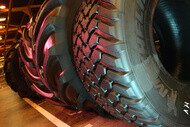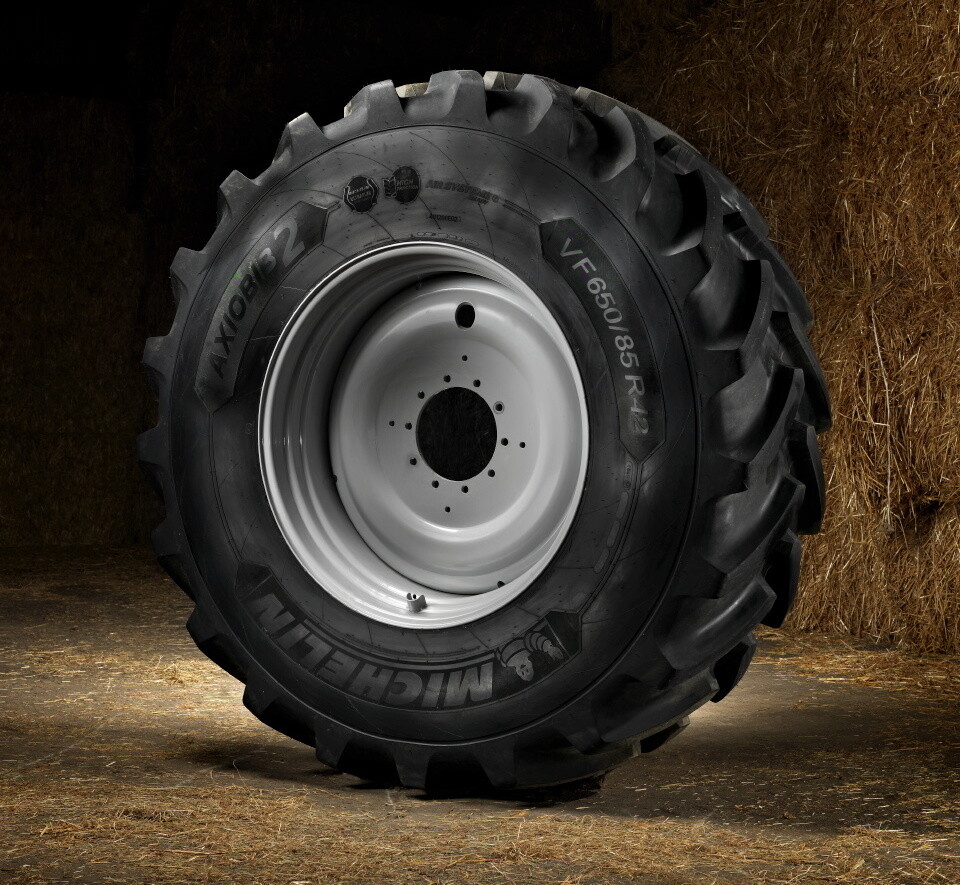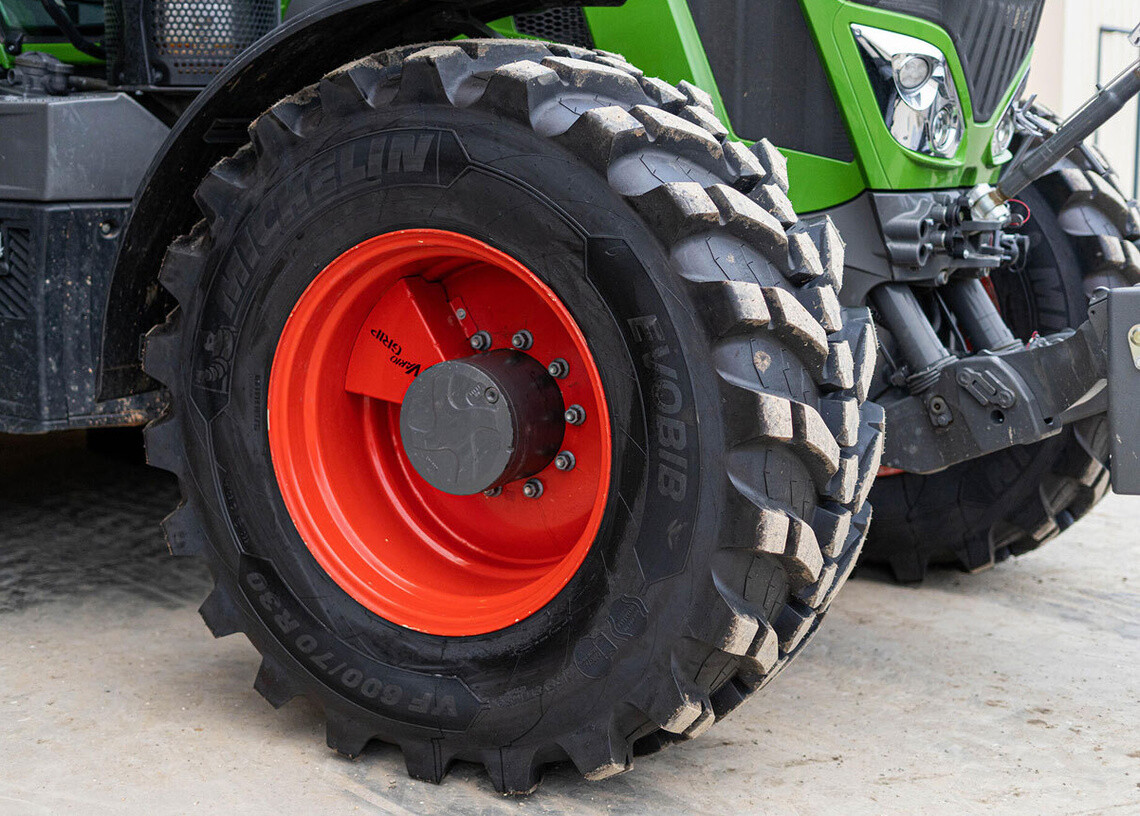
Tractor tyre replacement: when to change
Tyre replacement: when to change tractor tyres?
When carried out wisely, tyre replacement can maximise your tractor's performance in every use, improving your productivity. But when should you change tyres? How can you optimise their performance? Are there any contraindications?
Read on to find out the answers.
Tyre replacement based on tractor use
As you probably know, one of the most common reasons for tyre replacement on your tractor is to meet the needs of your activity. For example, wider tyres are often more appropriate for seeding or when the ground is soft. Conversely, narrow tyres make it easier to pass between the rows of crops in your field.
And as this can happen several times a year, instead of carrying out a tyre replacement, it's simpler and easier to replace the wheels as a whole (tyre + rim). This, of course, implies having a second set of wheels available.
How to choose the second set of wheels
If you want to easily manage a tyre replacement with two sets of wheels of different widths, it is important to ensure that the diameter ratio of the new ones is compatible with the tractor's axle ratio.
As the front wheels have a smaller diameter than the rear wheels, they do not rotate at the same speed. The axle ratio is the ratio between the speed of rotation of the front wheels and that of the rear wheels. For example, an axle ratio of 1.5 means that the front wheels turn 1.5 times faster than the rear wheels.
This ratio is generally indicated by your manufacturer. Tell it to your dealer, who will be able to advise you whether you want to widen the tyre for greater load capacity or to be able to lower the pressure to protect the ground.

MICHELIN Axiobib2 wheel
pneu MICHELIN AXIOBIB2
How to store unused wheels
When a set of wheels is not in use, store it in a clean, dry place away from direct sunlight. This will prevent premature ageing of the rubber and keep your tyres performing for longer.
Can different tyres be fitted to the same tractor?
As we've just explained, it's possible to fit different tyres to suit the needs of your field. But not everything is possible, as we'll explain below.
Can I fit different tyres at the front and rear?
It is technically possible, on a tractor, to fit two different ranges of tyres at the front and rear although this should only be done in response to specific needs, ensuring that preponderance is taken into account. Remember, however, that the ranges are designed for specific tractor powers and uses.
Can I fit different tyres on the same axle?
In some countries, the legislation requires identical left/right tyres to be fitted, with no distinction being made between a tractor axle and that of a passenger vehicle.
But even if you live in a country where this legal restriction does not apply, it is strongly recommended that you have the same size, the same load and speed index, the same brand of tyre and the same range on the same axle. It is also preferable to have the same level of wear on the two tyres of the same axle to avoid premature wear. This means that tyre replacement on the same axle should be done in pairs.

Identical tyre on a same axle
Tyre replacement due to wear
Wear is indeed an important signal for tyre replacement. And there are no wear indicators on tractor tyres as there are on passenger cars. Nevertheless, tyre wear is something to keep an eye on, as over-worn tyres can compromise traction and therefore increase fuel consumption, which of course has an impact on your costs.
When you notice that your tractor is having more difficulty in muddy and slippery conditions, this could mean that the tyres are wearing too much. Don't delay in consulting your dealer about tyre replacement.
The right pressure to optimise performance
Correct tyre pressure is essential to maximise traction, avoid premature wear and extend the life of your tyres. To make sure you always have the right pressure, we recommend checking it regularly with a reliable manometer and adjusting it if necessary according to load and speed.
How do I know the right pressure for my tyres?
If you don't know the recommended pressure for your tyres according to load and speed, you can consult our online tool "MICHELIN AGROPRESSURE" and let yourself be guided. In just a few seconds, our tool will help you find the right tyre pressure for any configuration of tractor and equipment even if you don't know the axle load.
When to check your tractor tyre pressure?
Check tyre pressure when replacing wheels
Have you decided to replace your wheelset with narrower or wider wheels? This is a good time to check your tyre pressure. The set of wheels you had in storage may have lost air since they were last used. Remember that under-inflated tyres perform less well and consume more fuel. Having the correct tyre pressure will save you money.
Check tyre pressure when your load changes
To ensure the best possible performance from your tyres, their pressure needs to be adjusted according to the load and speed of your tractor. If, for example, the tractor is carrying a plough on the road, this represents a heavy load that requires a higher tyre pressure. But once the plough has been put in the field, the tractor's load and speed are reduced, which means that your pressure has become too high.
However, if this is complicated, always choose the condition that is most penalising for the tyre and set the corresponding maximum pressure.
Tyre replacement: which tyres to choose?
Choosing the right type of tractor tyres is crucial to optimising your agricultural operations. Different terrains, soil conditions and tasks require specific tyre characteristics to ensure optimum traction, stability and longevity.
To help you make the right choice, browse our tyre selector:
Hello! I'll be your contact on your CTIS inquiries,
please tell us more about you.
Your request has been sent, we will get back to you as soon as possible
Need more advice? Discover our tyre choosing guide.




